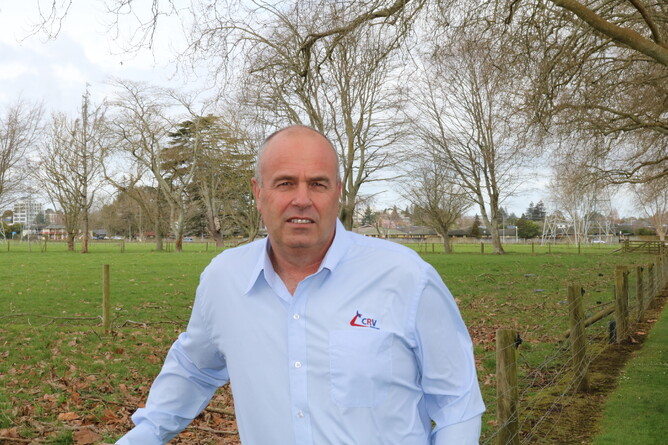Genetics will play a key role in helping farmers achieve a premium for their milk as part of Fonterra’s new Cooperative Difference Programme.
CRV Managing Director James Smallwood says it makes sense that farmers - who have invested in tools and solutions, such as genetics, to produce sustainable, high value milk from healthy and productive herds - are rewarded.
“The Co-operative Difference Payment programme aligns extremely well with what farmers can expect from breeding with CRV sires,” he says.
“For many years, CRV has provided farmers with a choice of sires that perform not only in terms of production, but also from a broader health and sustainability perspective.
“Our investment in research and development is ongoing, with at least 20 per cent of our revenue each year dedicated to finding innovative genetic solutions for New Zealand farmers.”
CRV has led the way in identifying teams of bulls that can help reduce cows’ MUN, increase facial eczema tolerance, breed hornless calves, and breed cows suited to once-a-day milking.
“Incorporating these types of traits over time into a breeding programme will help farmers future-proof their herd and their business,” says James.
CRV is currently taking part in research, which is an industry collaboration funded by MBIE, in partnership with NZAGRC, CRV and LIC, measuring feed intake and methane emissions – in the form of burps – from over 120 yearling CRV bulls.
Globally, CRV was the first cattle improvement organisation in the world to start large-scale measurement of the feed intake of dairy cows on working farms.
CRV is convinced that targeted breeding still has huge potential to improve the feed efficiency performance of cows.
In 2020, CRV Netherlands began collecting the feed intake data of more than 1600 cows. This data has been used to develop a Feed Efficiency index.
“By using of some of these Dutch genetics in our New Zealand portfolio and in our breeding programmes, our goal is to reduce the cost of milk production and increase the sustainability of dairy farming,” says James.
“Our connection to the wider CRV business and the R&D work being carried out in the Netherlands creates an opportunity to further strengthen our ability in this innovative trait space.
“Breeding is not a quick fix. While it plays a crucial role in producing quality and sustainably made consumer dairy products, farmers understand a breeding programme takes time. You don’t get the results in year one, which is why CRV focuses on longer-term gains.
“Targets, such as reducing cow numbers by 15 per cent while maintaining production, are achievable with small incremental gains. The benefit of genetics is that the gains are locked in the genes. The benefits will be passed on, which means they will be there for generations to come.”
CRV focuses on delivering innovative breeding solutions, including a strong focus on healthy and efficient herds.
CRV Breeding Programme Manager Aaron Parker explains that CRV incorporates Somatic Cell Count (SCC) as one of the traits in its breeding programme.
“We’ve put emphasis on SCC in our breeding programme to address the issue and that's exactly what farmers can do as well. Farmers can use their herd testing data to target their high SCC cows and use low SCC bulls as part of their breeding programme to improve that.
“Selecting the right bulls to use will absolutely help reduce the incidence of mastitis,” he says. “It's a slow process, but it is also a permanent one and you never lose the gains you make.
“Sub-clinical mastitis is not visible and can go undetected. Using data from herd testing is crucial for identifying cows with subclinical mastitis. This information is valuable in terms of identifying the right cows to treat, but also informs farmers’ breeding decisions to help reduce SCC in their herds.
“The heritability of SCS at 15 per cent is high enough to be able to make good progress through selection. All bulls in New Zealand receive a breeding value for Somatic Cell Count. Like with the bulk Cell Count we are aiming for lower values so a negative value for the breeding value is desirable.
“For example, assuming a population average of 150,000 for SCC, a breeding value of -1 is roughly equivalent to -75,000 SCC so resulting average level would be 75,000, which is a big improvement.”
James says CRV is committed to making a difference to each and every farmer it works with.
“The New Zealand grass-based system forms a great basis from which to produce healthy products with a low environmental footprint and good animal welfare.
“Our dairy industry’s goal is to produce a high quality, healthy and nutritious product that meets the needs of today’s global consumer, while still enabling our farmers to run an environmentally and economically sustainable business. We’re excited about the role genetics is playing to make that happen.”
